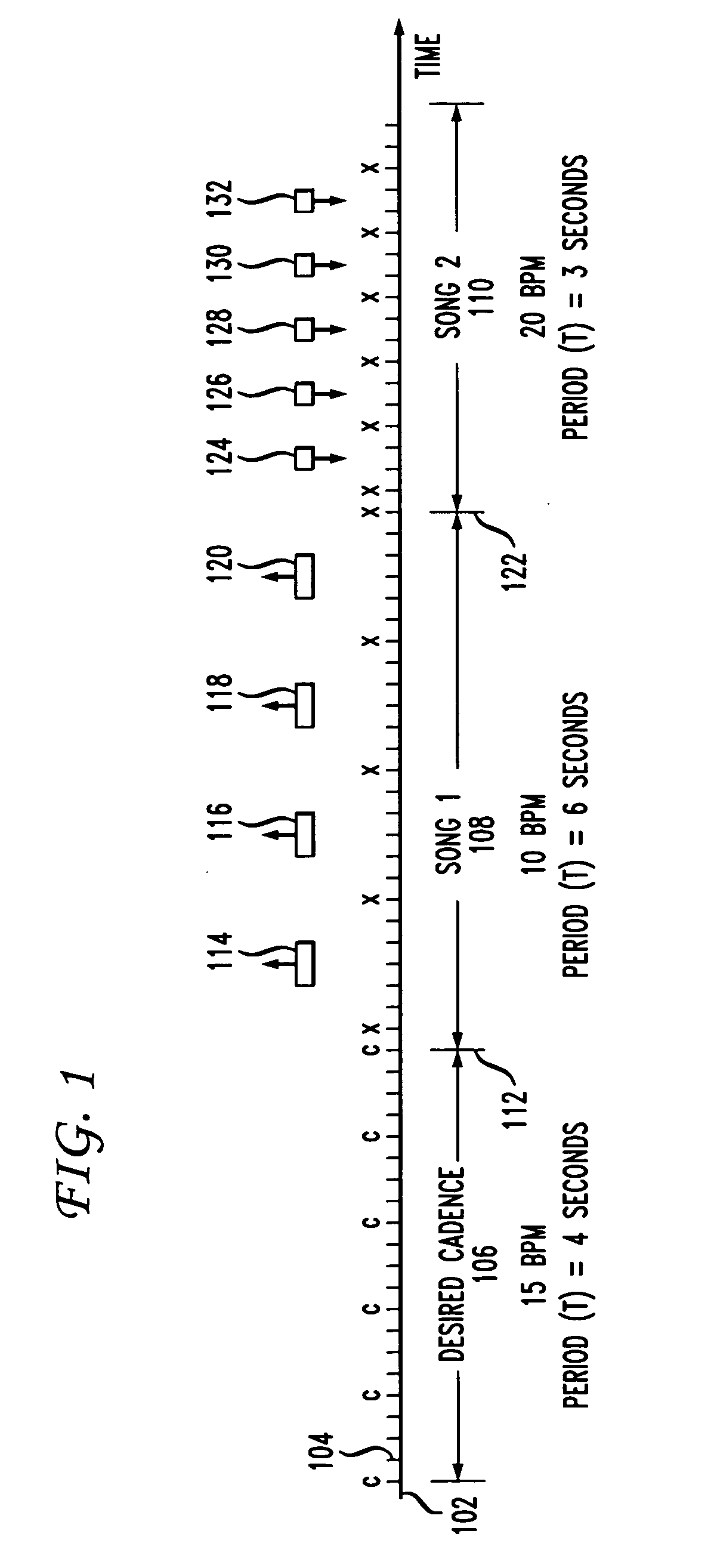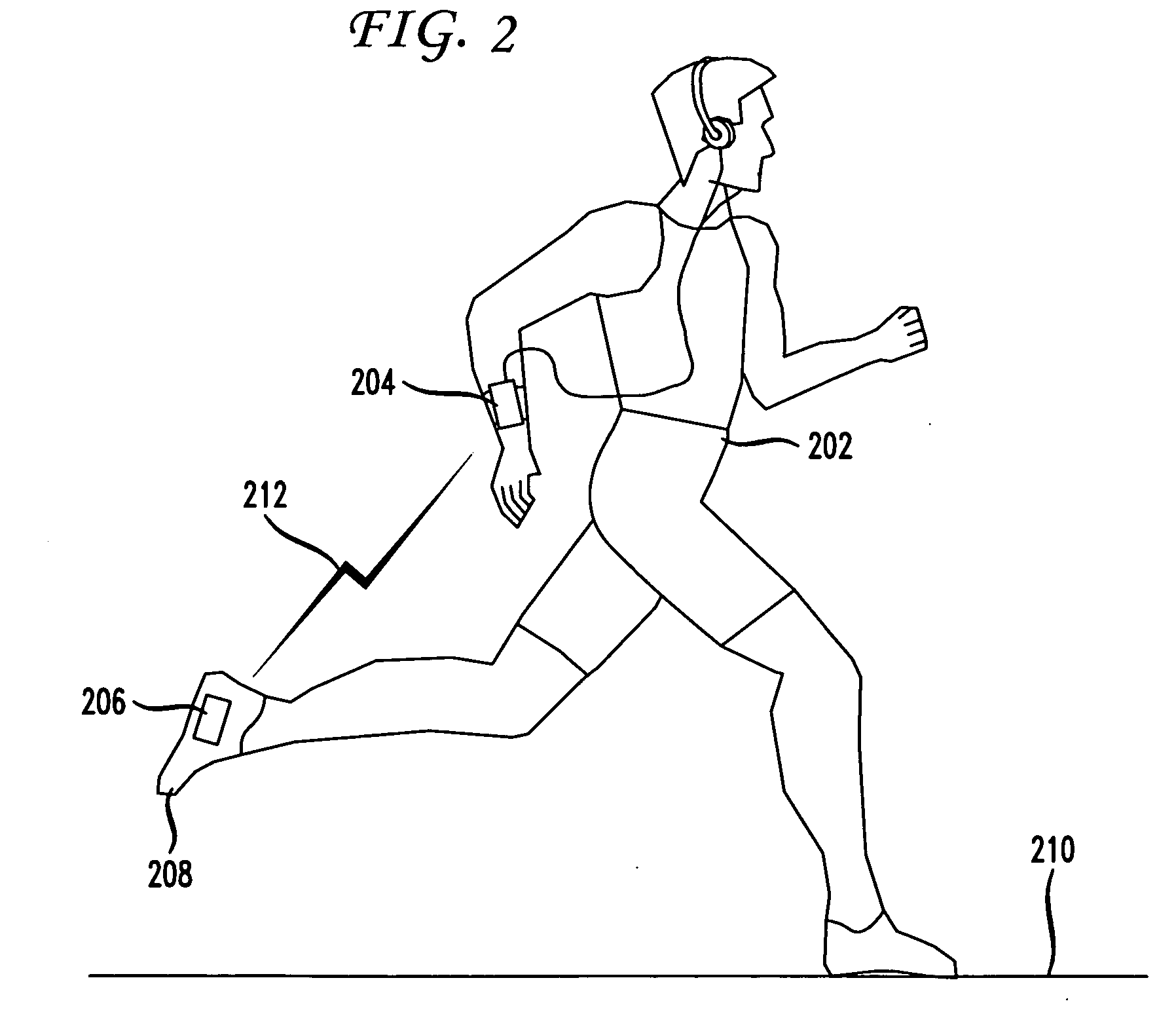Method and apparatus for adjusting the cadence of music on a personal audio device
- Summary
- Abstract
- Description
- Claims
- Application Information
AI Technical Summary
Benefits of technology
Problems solved by technology
Method used
Image
Examples
Embodiment Construction
[0016]FIG. 1 is a time diagram which will be used to illustrate the principles of the invention at a high level. FIG. 1 shows a time line 102 with hash marks (e.g., hash mark 104) marked in one second increments. Two songs are also shown, song 1108, and song 2110. Also shown as 106 is a desired cadence. The determination of the desired cadence will be described in further detail below in connection with step 404 of FIG. 4. The “C”'s in the figure represent the desired cadence based on a person's exercise. For example, the “C”'s could represent the timing of a jogger's foot impacting the ground. The “X”'s in the figure illustrate the back beat of each song. For example, the desired cadence 106 indicates a desired beat every 4 seconds as shown, because the “C”'s in the figure occur at every fourth time increment hash mark. Thus, the period (T) of the desired cadence is 4 seconds. At this rate, there will be 15 beats per minute (BPM) in the desired cadence. The desired cadence may ther...
PUM
 Login to View More
Login to View More Abstract
Description
Claims
Application Information
 Login to View More
Login to View More - Generate Ideas
- Intellectual Property
- Life Sciences
- Materials
- Tech Scout
- Unparalleled Data Quality
- Higher Quality Content
- 60% Fewer Hallucinations
Browse by: Latest US Patents, China's latest patents, Technical Efficacy Thesaurus, Application Domain, Technology Topic, Popular Technical Reports.
© 2025 PatSnap. All rights reserved.Legal|Privacy policy|Modern Slavery Act Transparency Statement|Sitemap|About US| Contact US: help@patsnap.com



